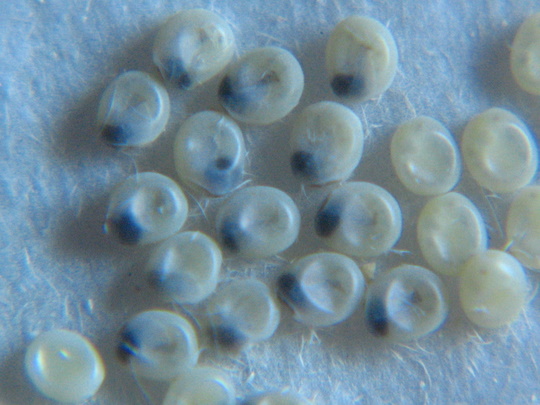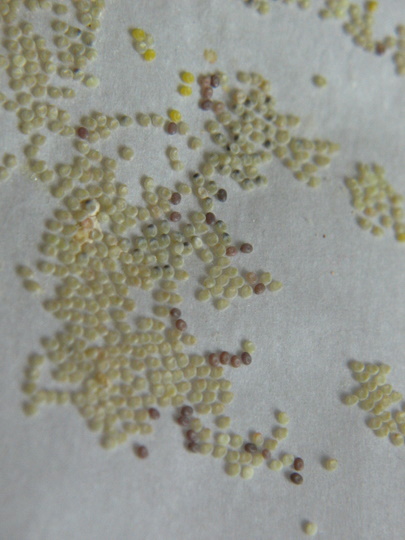Things are not always what they seem in this place…
I often bring in accidental travelers when I gather leaves to feed my silkworms. I get leaf hoppers, the occasional spider or caterpillar… and so I don’t worry too much when I notice something crawly coming out of my leaf bags.
Today’s immigrant seemed not-quite-right somehow. It’s a tiny little ant – or is it? It runs like an ant… it wiggles its little antennae like an ant – but then every once in a while, its disguise slips. It seems just a little too happy to be an ant alone – and it just didn’t move quite right. It was hard to tell, because it’s so small and moves so fast – but eventually I got it to declare itself – I tipped my hand sideways, and it promptly caught itself mid-fall with a rapelling rope and climbed back up.
He is SO a spider. Perfect mimic – I really did have to catch him in the act to be sure. I’m guessing, with a brief Google search and a flip through BugGuide.net, that it’s a jumping spider called Peckhamia picata. I think theirs is bigger, though – mine is maybe 2 mm long.
I kept him in a little plastic container so I could get some photos and to show Chris. You can see how he built himself a little web nest:



